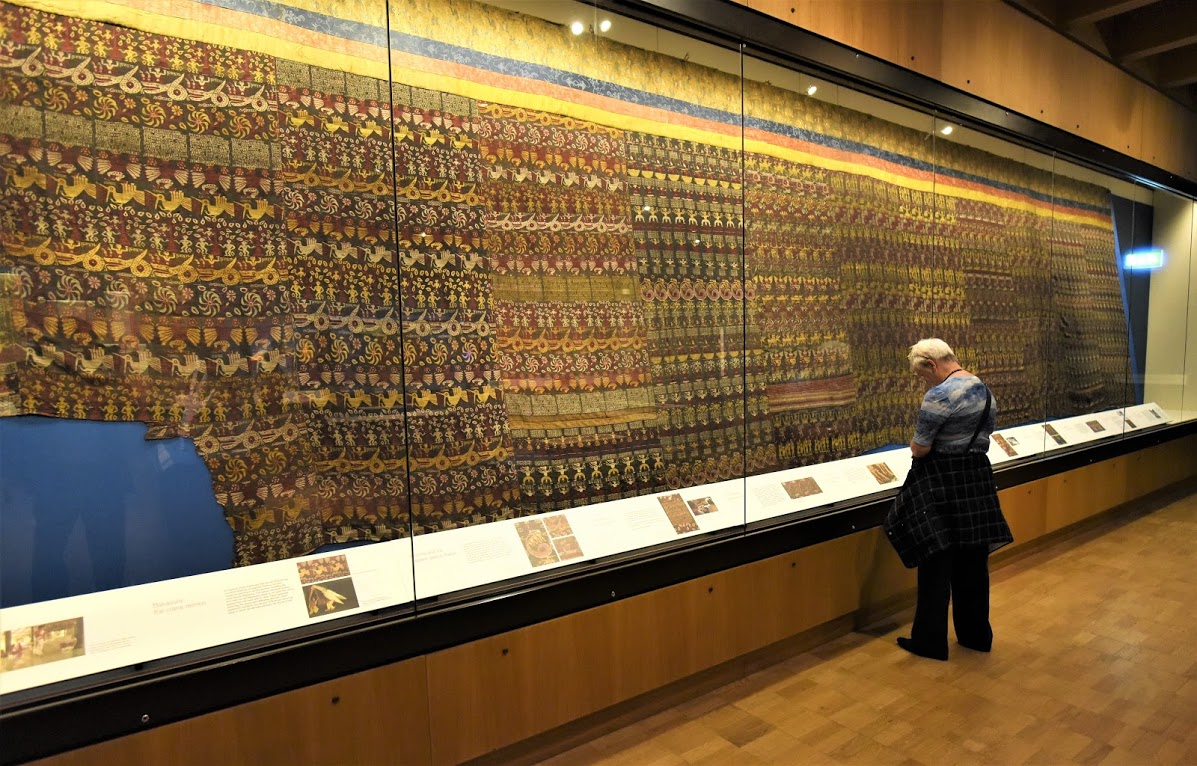Why in the News?
Assam Chief Minister Himanta Biswa Sarma left for London to initiate the process of bringing back the revered Vrindavani Vastra from the British Museum.

About Vrindavani Vastra:
- Origin: 16th-century silk tapestry woven under the guidance of Srimanta Sankaradeva at Taniguchi (Barpeta), Assam.
- Commission: Requested by Cilarai, brother of Koch king Naranarayana.
- Weavers: Led by disciple Gopal (Mathuradas Budha Ata).
- Design & Content:
- Depicts Krishna’s childhood and Vrindavan leelas – birth, adventures, defeat of Kamsa.
- Multicoloured silk with loom-embroidered captions for each scene.
- Current Status:
- Original piece lost; fragments preserved in British Museum, Victoria & Albert Museum (London), Guimet Museum (Paris).
- Plans are underway to bring it to Assam temporarily in 2027.
Who was Srimanta Sankaradeva (1449–1568)?
- About: Assamese Vaishnavite saint, scholar, cultural reformer, and polymath.
- Religious Contribution:
- Founded Ekasarana Dharma: Monotheistic Bhakti movement centred on Lord Krishna.
- Rejected idol worship, caste divisions, Brahmanical orthodoxy, and sacrifices.
- Motto: “Eka Deva, Eka Seva, Eka Biney Nahi Kewa” (One God, One Service, None Else).
- Influenced Koch and Ahom kingdoms.
- Cultural Contribution:
- Borgeet (devotional songs).
- Ankia Naat & Bhaona (religious theatre).
- Sattriya dance (recognised as a classical dance of India).
- Brajavali (literary language).
- Social Reform:
- Considered the father of modern Assamese identity.
- Promoted equality, fraternity, and community cohesion.
- Ended regressive practices (e.g., human sacrifice).
- Legacy:
- Combined art, devotion, and social reform into a unified cultural renaissance.
- Revered as one of Assam’s greatest spiritual and cultural icons.
| [UPSC 2014] With reference to the famous Sattriya dance, consider the following statements:
1. Sattriya is a combination of music, dance and drama. 2. It is a centuries-old living tradition of Vaishnavites of Assam. 3. It is based on classical Ragas and Talas of devotional songs composed by Tulsidas, Kabir and Mirabai. Which of the statements given above is/are correct? Options: (a) 1 only (b) 1 and 2 only* (c) 2 and 3 only (d) 1, 2 and 3 only |
Get an IAS/IPS ranker as your 1: 1 personal mentor for UPSC 2024

